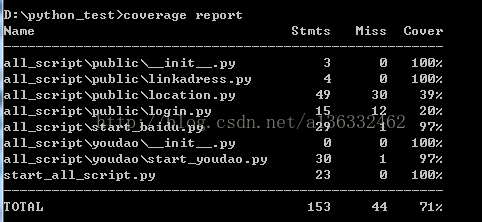pytorch 在网络中添加可训练参数,修改预训练权重文件的方法
实践中,针对不同的任务需求,我们经常会在现成的网络结构上做一定的修改来实现特定的目的。
假如我们现在有一个简单的两层感知机网络:
# -*- coding: utf-8 -*-
import torch
from torch.autograd import Variable
import torch.optim as optim
x = Variable(torch.FloatTensor([1, 2, 3])).cuda()
y = Variable(torch.FloatTensor([4, 5])).cuda()
class MLP(torch.nn.Module):
def __init__(self):
super(MLP, self).__init__()
self.linear1 = torch.nn.Linear(3, 5)
self.relu = torch.nn.ReLU()
self.linear2 = torch.nn.Linear(5, 2)
def forward(self, x):
x = self.linear1(x)
x = self.relu(x)
x = self.linear2(x)
return x
model = MLP().cuda()
loss_fn = torch.nn.MSELoss(size_average=False)
optimizer = optim.SGD(model.parameters(), lr=0.001, momentum=0.9)
for t in range(500):
y_pred = model(x)
loss = loss_fn(y_pred, y)
print(t, loss.data[0])
model.zero_grad()
loss.backward()
optimizer.step()
print(model(x))
现在想在前向传播时,在relu之后给x乘以一个可训练的系数,只需要在__init__函数中添加一个nn.Parameter类型变量,并在forward函数中乘以该变量即可:
class MLP(torch.nn.Module):
def __init__(self):
super(MLP, self).__init__()
self.linear1 = torch.nn.Linear(3, 5)
self.relu = torch.nn.ReLU()
self.linear2 = torch.nn.Linear(5, 2)
# the para to be added and updated in train phase, note that NO cuda() at last
self.coefficient = torch.nn.Parameter(torch.Tensor([1.55]))
def forward(self, x):
x = self.linear1(x)
x = self.relu(x)
x = self.coefficient * x
x = self.linear2(x)
return x
注意,Parameter变量和Variable变量的操作大致相同,但是不能手动调用.cuda()方法将其加载在GPU上,事实上它会自动在GPU上加载,可以通过model.state_dict()或者model.named_parameters()函数查看现在的全部可训练参数(包括通过继承得到的父类中的参数):
print(model.state_dict().keys()) for i, j in model.named_parameters(): print(i) print(j)
输出如下:
odict_keys(['linear1.weight', 'linear1.bias', 'linear2.weight', 'linear2.bias']) linear1.weight Parameter containing: -0.3582 -0.0283 0.2607 0.5190 -0.2221 0.0665 -0.2586 -0.3311 0.1927 -0.2765 0.5590 -0.2598 0.4679 -0.2923 -0.3379 [torch.cuda.FloatTensor of size 5x3 (GPU 0)] linear1.bias Parameter containing: -0.2549 -0.5246 -0.1109 0.5237 -0.1362 [torch.cuda.FloatTensor of size 5 (GPU 0)] linear2.weight Parameter containing: -0.0286 -0.3045 0.1928 -0.2323 0.2966 0.2601 0.1441 -0.2159 0.2484 0.0544 [torch.cuda.FloatTensor of size 2x5 (GPU 0)] linear2.bias Parameter containing: -0.4038 0.3129 [torch.cuda.FloatTensor of size 2 (GPU 0)]
这个参数会在反向传播时与原有变量同时参与更新,这就达到了添加可训练参数的目的。
如果我们有原先网络的预训练权重,现在添加了一个新的参数,原有的权重文件自然就不能加载了,我们需要修改原权重文件,在其中添加我们的新变量的初始值。
调用model.state_dict查看我们添加的参数在参数字典中的完整名称,然后打开原先的权重文件:
a = torch.load("OldWeights.pth") a是一个collecitons.OrderedDict类型变量,也就是一个有序字典,直接将新参数名称和初始值作为键值对插入,然后保存即可。
a = torch.load("OldWeights.pth")
a["layer1.0.coefficient"] = torch.FloatTensor([1.2])
a["layer1.1.coefficient"] = torch.FloatTensor([1.5])
torch.save(a, "Weights.pth")
现在权重就可以加载在修改后的模型上了。
以上这篇pytorch 在网络中添加可训练参数,修改预训练权重文件的方法就是小编分享给大家的全部内容了,希望能给大家一个参考,也希望大家多多支持【听图阁-专注于Python设计】。
